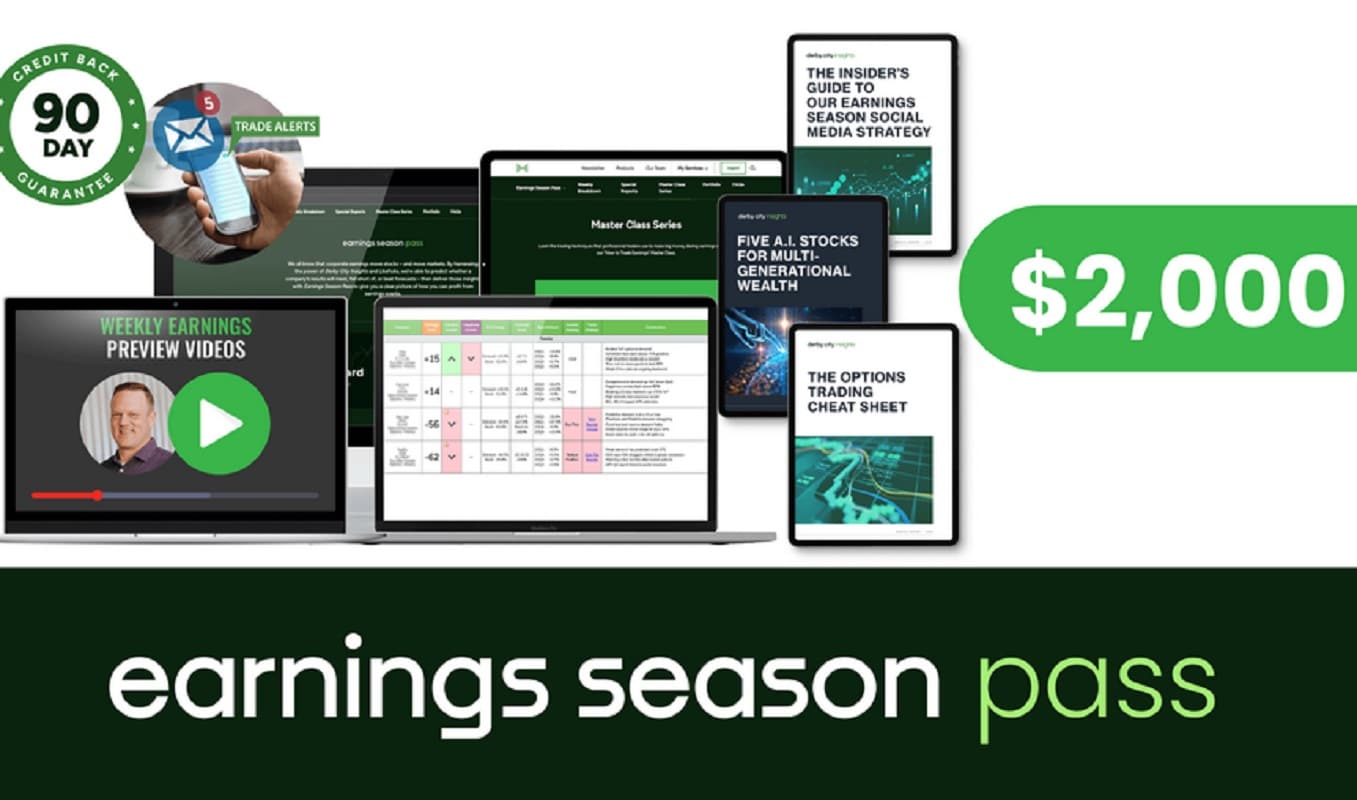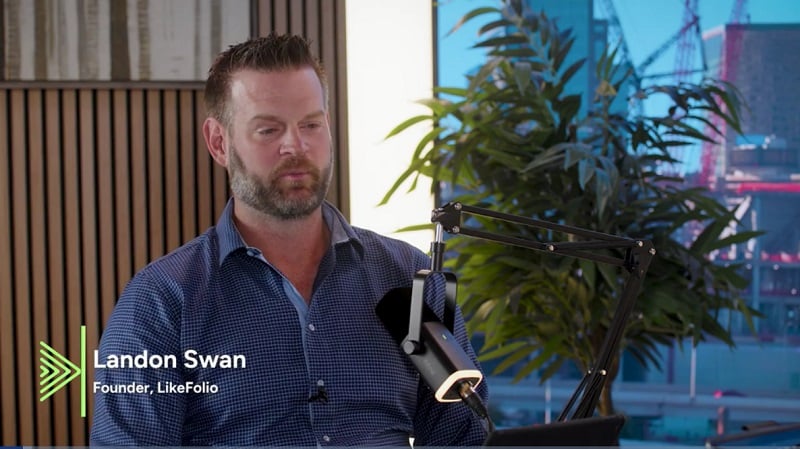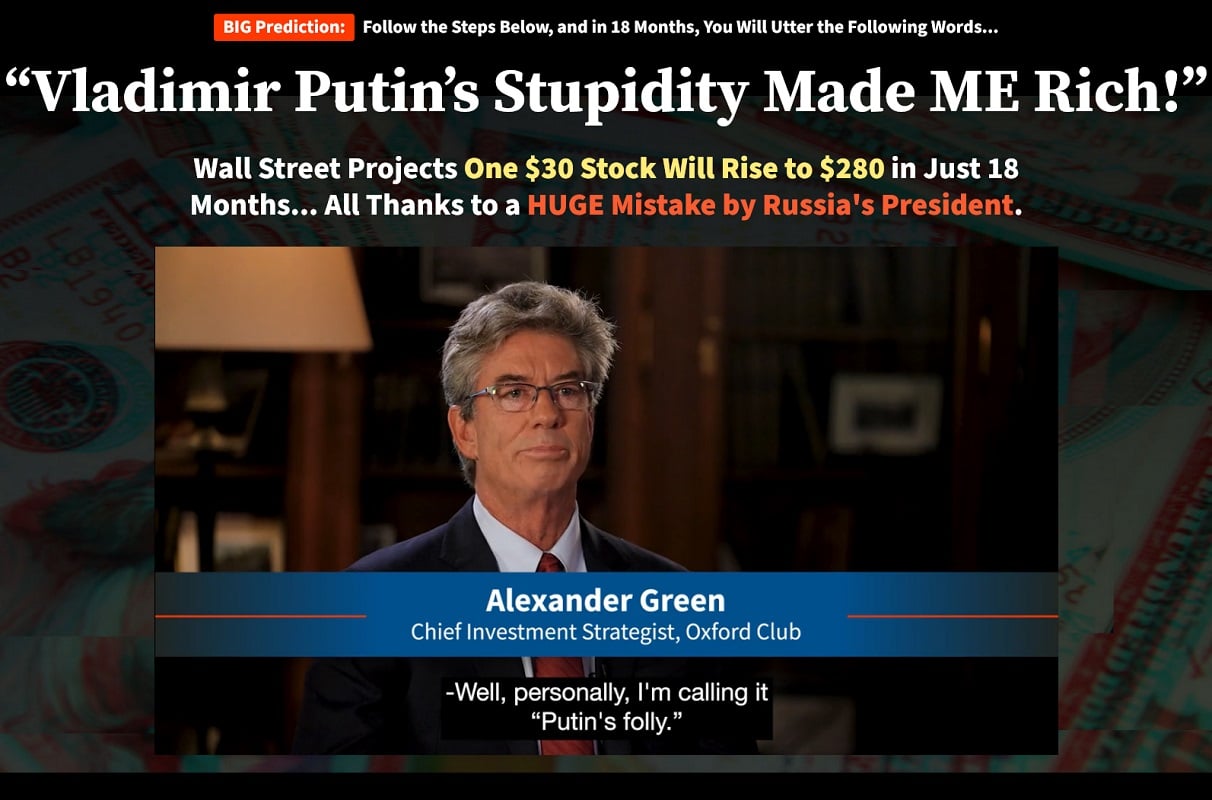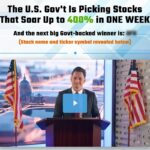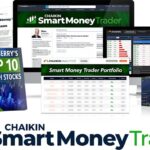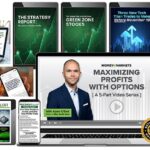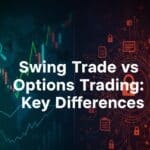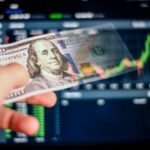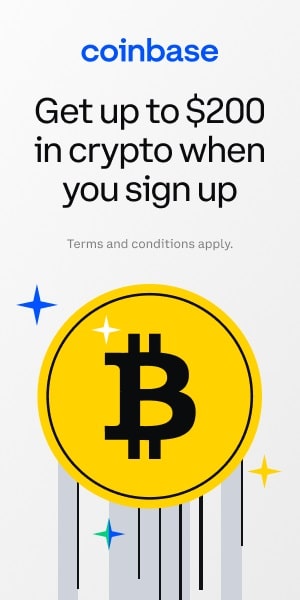In an era where information is king, the ability to predict stock market movements ahead of Wall Street can mean the difference between modest returns and life-changing gains.
Keith Kaplan and Landon Swan, a veteran trader and data expert recently integrated into TradeSmith, sat down to unpack a revolutionary approach to trading: leveraging social media and web data to anticipate earnings surprises. This isn’t just about gut feelings or traditional analysis—it’s about harnessing millions of consumer signals to spot divergences between public sentiment and Wall Street expectations. With artificial intelligence (AI) now amplifying business efficiency, the stakes—and potential rewards—are higher than ever.
The Power of Social Data in Modern Trading
Landon’s journey, from founding the first social network trading company in 2000 to joining TradeSmith, reflects a career built on innovation.
Alongside his brother Andy and their team, he’s spent over two decades refining a system that turns raw social data into actionable trading insights. Their tool, the Earnings Season Pass, promises to deliver these insights to everyday investors, not just hedge funds willing to pay $750,000 annually for the privilege.
This article dives deep into their methodology, showcases real-world examples of massive gains, and explores why the next three quarters of 2025 could be a golden window for traders betting on AI-driven surprises.
The Evolution of an Information Edge
From Ticker Tapes to Twitter: A Historical Perspective
The concept of gaining an information edge isn’t new. In the early 19th century, Nathan Rothschild used a private courier system—fast ships, relays of horses, and carrier pigeons—to learn of Napoleon’s defeat at Waterloo two days before London’s official messengers. This allowed him to trade on news no one else had, doubling his wealth in a year.
A century later, Jesse Livermore exploited ticker tape delays in the early 1900s, using direct phone lines to the NYSE to act on trades 15-20 minutes ahead of the crowd. More recently, Michael Burry’s meticulous analysis of mortgage-backed securities before the 2008 crash netted his firm a 500% profit while Wall Street crumbled.
What ties these stories together is the power of acting on information others don’t yet have—or don’t fully understand.
Today, Landon and his team at TradeSmith have modernized this principle, replacing pigeons and ticker tapes with social media feeds, web traffic data, and AI algorithms. “It’s a tale as old as time,” Landon says, “people trying to get the information about the markets before everyone else.”
The Birth of LikeFolio and Social Trading
Landon’s foray into social data began in 2000 when he and Andy launched what’s considered the first social network trading company. It offered active traders real-time advice through a live chatroom, complete with screen-sharing and trade copying—a novel concept at the time.
After seven years, they sold it to a private investor, then built a second company in the same vein, which was acquired by Thinkorswim, later rolled into TD Ameritrade and eventually Schwab.
In 2013, they founded LikeFolio, focusing on a new frontier: mining social media for consumer sentiment. By 2017, they sold their first dataset to a quant firm, but the real breakthrough came when Georgetown University validated their approach. A peer-reviewed study in a top accounting journal declared, “The purchase intent metric is not only predictive of a company’s upcoming sales, but also can account for the unexpected component of sales growth that analysts miss.” This catapulted LikeFolio into the spotlight, attracting hedge funds and setting the stage for their integration into TradeSmith.
How It Works: Turning Social Noise into Trading Signals
The Data Sources: A Multi-Layered Approach
When LikeFolio started, Twitter (now X) was the sole data source—hundreds of millions of tweets daily, accessed through a full data feed partnership, not scraping. Over time, they expanded to include Reddit, YouTube, Facebook, Google Trends, web traffic, app data, and search terms. “Getting all the different data sources was big for us,” Landon explains. “Twitter’s great, but when you add all these other ones, you start to see things you couldn’t have seen.”
For example, Cracker Barrel’s customer base rarely tweets, but searches for “Cracker Barrel near me” correlate strongly with revenue. Similarly, a spike in “Cancel Netflix” searches signals trouble for the streaming giant. AI now helps identify which data sources best predict each company’s performance, refining their accuracy quarter by quarter.
The Brand Map: Decoding Consumer Sentiment
At the heart of their system is the “brand map,” a proprietary framework tying products, brands, and search terms to parent companies. When Apple releases AirPods, people don’t always say, “I bought Apple AirPods.” They might call them “music pods” or “new headphones.” The brand map captures these variations, tracking sentiment and purchase intent across millions of mentions. “It took a long time to build this,” Landon notes, a process spanning from 2013 to 2017.
This map powers three key metrics:
1. Brand Mentions: How often a company or product is discussed online.
2. Consumer Happiness: Positive vs. negative sentiment, tailored by industry (e.g., iPhone praise differs from restaurant reviews).
3. Purchase Intent: Signals of buying behavior, like “I’m getting the new iPhone” or “Ate at Olive Garden.”
The Social Heat Indicator and Earnings Score
These metrics feed into the “social heat indicator,” a snapshot of consumer enthusiasm. But the real magic happens with the “earnings score,” a -100 to +100 scale that combines social data, historical stock performance, analyst expectations, and market trends. Scores between -19 and +19 are neutral—aligned with Wall Street’s view. Beyond that, the divergence signals a trade: +20 to +70 for bullish bets, -20 to -70 for bearish ones. Rare scores above 80 or below -80 are “swing-for-the-fences” opportunities.
Real-World Wins: Case Studies of Massive Gains
Kohl’s: 900% in Five Days
In a classic example, Kohl’s—a retailer often dismissed by Wall Street—delivered a 900% gain in less than five days. “Wall Street loves to hate on Kohl’s,” Landon says, assuming its decline would continue. But social data showed a stabilization—enough to signal an earnings beat. The stock snapped upward, rewarding traders who spotted the divergence.
Ulta Beauty: 864% in Five Days
Ulta Beauty’s 864% gain in under five days came during earnings season, driven by social media buzz around partnerships and sponsorships. “We could see it picking up,” Landon recalls. “People were saying, ‘I’m using this. I really like this.’” The stock moved up while Wall Street expected a dip, proving the power of real-time sentiment tracking.
Affirm Holdings: 1,900% in Five Days
Affirm Holdings offered a 1,900% gain, a “swing-for-the-fences” trade reminiscent of the UGG boots anomaly that first convinced Landon of their system’s potential. “We’re either wrong or we’re about to hit it out of the park,” he says. With everything aligned—social heat, low expectations, and a strong earnings report—they hit it big.
On Holdings: 104% in Four Days
On Holdings (known for On Cloud shoes) bucked a negative shoe industry trend, yielding 104% in four days. Olympic visibility and sky-high happiness scores (10-15 points above Nike) signaled a breakout. “When the trend’s going negative and one company’s positive, that’s fun,” Landon notes.
Lands’ End: 500% in Five Days
Lands’ End, an unloved clothing retailer, scored a +63 earnings score—highly significant—leading to a 500% gain in five days. “It’s just math,” Keith marvels. Wall Street saw decline; the data saw love. The result: $1,000 turned into $6,000.
The AI Revolution: Why 2025 Is the Year to Watch
Beyond Chips: AI as a Business Amplifier
AI’s hype phase—focused on chipmakers like Nvidia—is giving way to application. “We’re starting to get to results,” Landon says. Companies are now using AI to cut costs, boost revenue, and transform operations, often quietly. This shift promises earnings surprises, especially in non-tech sectors Wall Street overlooks.
Shopify: The Top Pick for Q2 2025
Landon’s top pick for the upcoming quarter is Shopify (SHOP). With web visits up 30% year-over-year while competitors like Amazon and Etsy decline, Shopify’s AI tools—streamlining merchant setup and enabling one-click Shop Pay purchases—are poised to drive a blowout. “I hope Wall Street is neutral on them,” he says, eyeing a massive divergence.
Other AI Winners: Netflix, Duolingo, and Beyond
Netflix’s 117% gain in Q1 2025 showcased AI’s impact: better recommendations, dubbed foreign films, and global reach with the same staff. Duolingo’s 84% gain leveraged AI for language learning enhancements. CrowdStrike (112% with Nvidia collaboration) and Wix (38% for website tools) further illustrate AI’s early adopters thriving.
The Long Tail: Non-Digital Surprises
Landon predicts non-digital companies will follow. A Louisville mortgage firm’s AI “employee” Jenny, making 1,600 calls daily for $400 monthly, exemplifies this. “The ones that don’t adopt, their competitors will,” he warns, forecasting a multi-quarter wave of AI-driven gains.
The Earnings Season Pass: Bringing It to the Masses
What’s Included
TradeSmith’s Earnings Season Pass distills this edge into an accessible package:
– Weekly Scorecard: Covers 500 stocks, detailing earnings scores, historical trends, and trade setups.
– Sunday Video: A 10-25 minute breakdown of the week ahead, spotlighting top trades.
– 15-Part Masterclass: Educates on options and strategy.
– Nine Options Strategies: Simple spreads capping risk and amplifying gains.
– Reports: Insider guides, cheat sheets, and AI surprise picks.
– 90-Day Guarantee: Full credit refund if unsatisfied.
Priced at $2,000 annually (down from $5,000), it’s a steal compared to hedge fund rates.
Options: Magnifying Gains, Minimizing Risk
Options spreads—like buying a $100 call and selling a $105 call for $1—limit downside to the premium paid while offering 400%+ upside. “You risk one to make four,” Landon explains. A United trade turned $1,000 into $2,000 with a 7% stock move, versus $15,000 risked for the same gain buying shares outright.
The Fun Factor
“It’s like the craps table,” Landon laughs. “You’re all rolling, you high-five at the end.” Customers echo this, calling it the most fun they’ve had investing. Novices turn profitable in a week; veterans amplify returns. “Sometimes they make the cost back in the first week,” he adds.
Conclusion: Seizing the AI Opportunity in 2025
As AI reshapes industries, the next three quarters of 2025 promise unprecedented earnings surprises. Landon’s system—rooted in social data, validated by academia, and honed over decades—offers a crystal ball for spotting them. From Shopify’s imminent pop to sleeper hits in non-tech sectors, the Earnings Season Pass levels the playing field, giving retail traders an edge once reserved for quant funds.
At $2,000, backed by a 90-day guarantee, it’s a low-risk bet on a high-reward year. “Shoot me an email when you win,” Landon urges. For those ready to ride the AI wave, this could be the most fun—and profitable—move of 2025.
FAQ: Unpacking Social Data and Earnings Surprises in 2025
What is the Earnings Season Pass, and what does it offer?
The Earnings Season Pass is a TradeSmith service led by Landon Swan that uses social media and web data to predict earnings surprises. For $2,000 annually (down from $5,000), subscribers get a weekly scorecard covering 500 stocks with earnings scores and trade setups, a 10-25 minute Sunday video highlighting top trades, a 15-part masterclass on options trading, nine simple options strategies, and reports like the “Five AI Surprise Stocks for This Quarter.” It’s backed by a 90-day credit guarantee, making it a low-risk way to tap into a hedge fund-level edge.
What’s an earnings score, and how does it work?
The earnings score is a -100 to +100 scale that quantifies a stock’s potential based on social data, historical performance, and analyst expectations. Scores from -19 to +19 are neutral, aligning with the market. Beyond that, +20 to +70 (bullish) or -20 to -70 (bearish) suggest trades, with rare 80+ or -80+ scores indicating “swing-for-the-fences” opportunities. For example, JetBlue’s -43 score led to a 111% gain, while Lands’ End’s +63 delivered 500%, showing how it simplifies complex data into actionable insights.
Why is AI so important for earnings surprises in 2025?
AI is shifting from hype (e.g., Nvidia’s chip boom) to application, transforming companies by cutting costs and boosting revenue. Landon predicts this will drive unexpected earnings beats, especially in non-tech sectors. Examples include Netflix’s 117% gain from AI-enhanced recommendations and Shopify’s anticipated pop from AI tools for merchants and consumers. Over the next four quarters, companies adopting AI will surprise Wall Street, creating outsized trading opportunities.
What are some examples of past wins using this system?
The system has delivered huge gains: Kohl’s (900% in five days) when social data showed stabilization Wall Street missed; Ulta Beauty (864% in five days) from social media buzz; Affirm Holdings (1,900% in five days) as a high-risk, high-reward bet; On Holdings (104% in four days) bucking a negative trend; and Lands’ End (500% in five days) with a +63 score. These showcase how divergences between data and expectations fuel profits.
How does the service use options to reduce risk?
Instead of buying stocks outright, Landon uses options spreads (e.g., buy a $100 call, sell a $105 call for $1), capping downside to the premium paid while offering 400%+ upside. For United, a 7% stock move turned $1,000 into $2,000 via options, versus risking $15,000 in shares for the same gain. Risk management ensures losses are small (e.g., $200-$400), making it safer than traditional options trading when paired with their data edge.
Who is this service for—novices or experienced traders?
Both. Novices find it accessible with a 15-part masterclass, clickable trade videos, and simple instructions—some recoup the $2,000 cost in a week. Experienced traders leverage the data for bigger wins, like the 500% Lands’ End trade. It’s also useful for stock holders checking scores (e.g., +40 on Tesla) to decide whether to hold, sell, or trade options, offering flexibility for all levels.
Why is Shopify a top pick for the next earnings season?
Shopify (SHOP) is Landon’s #1 pick due to its AI-driven tools—helping merchants with taxes, customs, and product launches, and consumers with Shop Pay’s one-click buying. Web visits are up 30% year-over-year while competitors like Amazon and Etsy decline, suggesting a breakout. If Wall Street underestimates this, the divergence could yield a massive gain, making it a prime target for Q2 2025.
How reliable is this data, and what validates it?
Georgetown University’s peer-reviewed study in a top accounting journal confirmed that LikeFolio’s purchase intent metric predicts sales and explains earnings surprises Wall Street misses. Hedge funds pay up to $750,000 yearly for this data, and real-world wins—like 1,900% on Affirm—prove its edge. Historical patterns and AI-enhanced correlations (e.g., “Cracker Barrel near me” searches) further boost reliability.
What makes this service fun, and why should I join now?
Customers call it “the most fun they’ve had investing,” likening it to a craps table where everyone wins together. Weekly videos, clear trade setups, and big wins (e.g., 300% on Restoration Hardware) create excitement. Landon says the next four quarters of 2025 will see AI surprises in unexpected stocks, making it the perfect time to join for $2,000—especially with a 90-day guarantee and potential to profit from trends Wall Street hasn’t caught yet.

